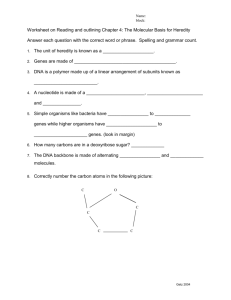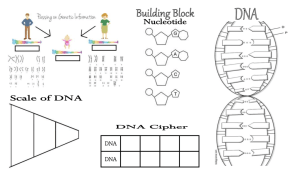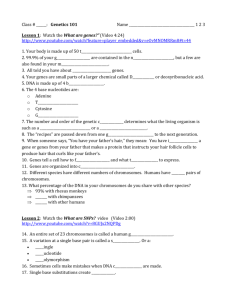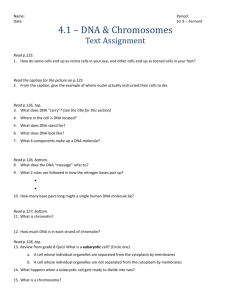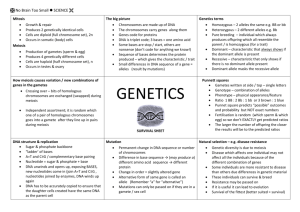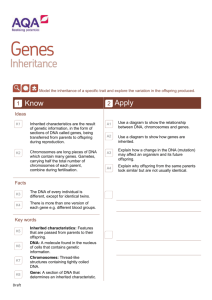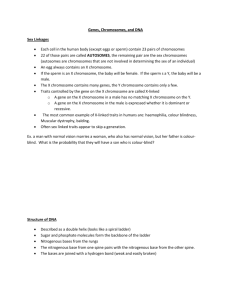Script
advertisement
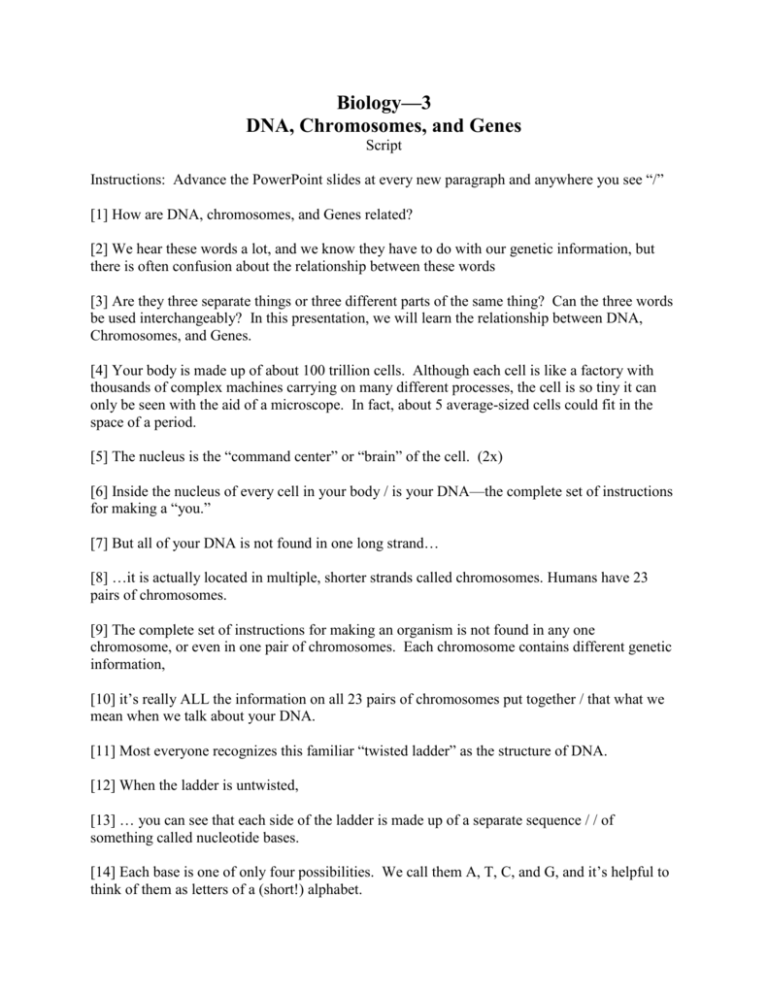
Biology—3 DNA, Chromosomes, and Genes Script Instructions: Advance the PowerPoint slides at every new paragraph and anywhere you see “/” [1] How are DNA, chromosomes, and Genes related? [2] We hear these words a lot, and we know they have to do with our genetic information, but there is often confusion about the relationship between these words [3] Are they three separate things or three different parts of the same thing? Can the three words be used interchangeably? In this presentation, we will learn the relationship between DNA, Chromosomes, and Genes. [4] Your body is made up of about 100 trillion cells. Although each cell is like a factory with thousands of complex machines carrying on many different processes, the cell is so tiny it can only be seen with the aid of a microscope. In fact, about 5 average-sized cells could fit in the space of a period. [5] The nucleus is the “command center” or “brain” of the cell. (2x) [6] Inside the nucleus of every cell in your body / is your DNA—the complete set of instructions for making a “you.” [7] But all of your DNA is not found in one long strand… [8] …it is actually located in multiple, shorter strands called chromosomes. Humans have 23 pairs of chromosomes. [9] The complete set of instructions for making an organism is not found in any one chromosome, or even in one pair of chromosomes. Each chromosome contains different genetic information, [10] it’s really ALL the information on all 23 pairs of chromosomes put together / that what we mean when we talk about your DNA. [11] Most everyone recognizes this familiar “twisted ladder” as the structure of DNA. [12] When the ladder is untwisted, [13] … you can see that each side of the ladder is made up of a separate sequence / / of something called nucleotide bases. [14] Each base is one of only four possibilities. We call them A, T, C, and G, and it’s helpful to think of them as letters of a (short!) alphabet. [15] These four bases appear in different orders and combinations on the ladder [16] Nucleotide bases from one strand / join with nucleotide bases from the other strand / to form the “rungs” of the ladder. / A always joins with T and G always joins with C [17] Three bases in a row make up a codon, which you can think of as a 3-letter word. [18] A certain sequence of codons— (x 7) which may include dozens, hundreds, or even thousands of bases/ —is called a gene. If codons are like words, / genes are like chapters in a book. [19] A certain sequence of genes / makes up a chromosome, / / which can be compared to a single book [20] All your chromosomes together / —which means all your DNA / --could be compared to a whole series of books. [21] Let’s review, going from larger units to smaller units: / chromosomes are made up of smaller units / called genes [22] Genes are made up of smaller units called codons [23] Codons are made up of three individual nucleotide bases. [24] Or going from smallest to largest: Individual nucleotide bases / (which are like letters) make up codons / (which are like words) / that make up the genes / (which are like chapters) / that make up chromosomes / (which are like individual books) / which all together make up all your DNA / (and are like a series of books)

